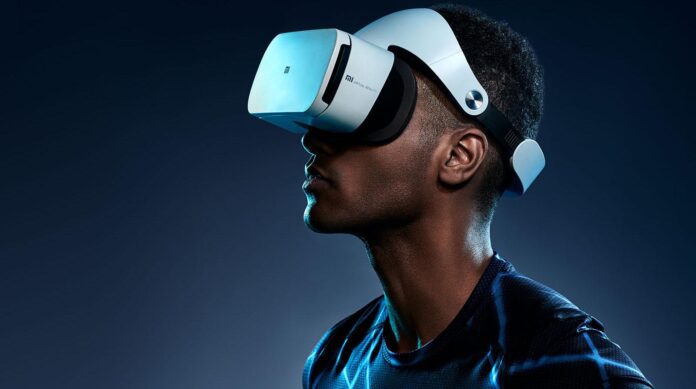Virtual reality (VR) technology has rapidly grown in popularity and adoption over the past few years. With major tech companies like Meta, HTC, and Sony releasing new VR hardware and platforms, virtual reality is becoming more immersive, affordable, and accessible. This blog post will explore the evolution of VR technology and how it is transforming gaming, entertainment, workplace collaboration, and even medical applications.
Early Days of VR
The earliest virtual reality headsets emerged in the late 1980s and 1990s, pioneered by companies like VPL Research. These primitive VR systems were bulky, expensive, and offered limited graphics and mobility. However, they laid the groundwork for future innovation by demonstrating the potential of immersive simulated environments.
In the early 2010s, Palmer Luckey’s Oculus Rift kickstarter campaign reignited mainstream interest in virtual reality technology. The Rift offered motion tracking, a wide field of view, and greater immersion at a more affordable consumer price point. As VR hardware improved during this decade, content platforms like SteamVR expanded the VR ecosystem with more diverse gaming and entertainment software.
Current State of VR Technology
Today’s virtual reality systems demonstrate major technological advances that have taken the VR experience to new heights. Headsets like the Oculus Quest 2 and HTC Vive Pro 2 feature high resolution displays, powerful mobile processors, and inside-out tracking that eliminates the need for external sensors. This allows for greater freedom of movement in VR, including features like hand tracking that let users interact naturally with their virtual environment.
Higher visual fidelity, frame rates, and ergonomic designs offer a much more immersive experience that approximates reality more closely than ever. Wireless options like the Oculus Quest 2 have made VR more accessible in typical home settings without the need for a wired PC connection. These improvements have expanded the appeal and adoption of consumer VR technology.
VR in Gaming and Entertainment
Virtual reality has had an especially significant impact on the gaming and entertainment industries. Iconic gaming franchises like Beat Saber, Half-Life, and Resident Evil have received popular VR adaptations, while new IPs like Superhot VR have emerged natively in virtual reality. Roomscale gameplay with motion controls provides a much more engaging experience compared to traditional screens and controllers.
Beyond gaming, VR enables transformative entertainment experiences like attending live concerts, walking across the globe with Google Earth VR, or watching films in immersive 360 degree environments. Theme park attractions and arcades are also incorporating VR technology into their offerings. As VR hardware and content continues improving, its presence across gaming and entertainment will likely grow even further.
VR in the Workplace
While consumer adoption drives much of the virtual reality market, VR is also becoming a useful tool for various workplace settings. Collaborative apps like Spatial and Meta’s Horizon Workrooms allow remotely distributed teams to interact in a shared virtual space as if they were in the same physical office. This helps facilitate better communication and teamwork.
VR is also beneficial for employee training across fields like medicine, aviation, construction and more. Simulating risky or expensive real-world environments allows trainees to prepare safely in VR. For example, surgeons can practice complex operations, pilots can train for emergency scenarios, and construction workers can learn to operate heavy machinery without real-world risks. Virtual reality can even enable greater accessibility for those unable to travel and attend events in-person due to disabilities. The range of utility VR offers different industries will continue expanding over time.
VR in Medicine
Some of the most impactful emerging applications of virtual reality are in the medical field. VR allows doctors to view and interact with high resolution 3D visualizations of the human body for improved diagnosis, pre-operative planning, and anatomical education. Simulated surgeries in VR can help surgeons prepare for complex procedures. Virtual reality also shows promise for treating certain phobias and anxiety through immersive therapy.
For patients, VR provides an engaging distraction to alleviate pain and discomfort during medical treatments, from minor procedures to wound care for severe burns. It can also aid recovery by improving motor skills through gamified rehabilitation. As VR continues integrating into more aspects of healthcare, it may enhance the quality and accessibility of medical services.
The Future of VR
Current trends indicate an exciting future lies ahead for virtual reality as the underlying technology improves and creative minds discover new applications for VR. Seamlessly blending AR and VR together in hybrid experiences may provide even greater immersion and usefulness. Haptics and motion tracking also have room for advancement to increase the physical feedback and interaction fidelity.
If current momentum continues, VR has the potential to fundamentally transform digital interaction across many facets of work, entertainment, communication and beyond. But room for improvement remains in making VR experiences comfortable for all users, decreasing isolation from the physical world, and increasing accessibility. As hardware prices lower over time, VR may eventually become as commonplace as smartphones. The virtual worlds of tomorrow will likely bear little resemblance to today’s early VR environments.
Conclusion
From humble origins in research labs, virtual reality has emerged as a transformative digital platform primed to unlock new possibilities for how humans experience and interact with both virtual and real-world environments. Though VR technology is still evolving, its current capabilities offer highly immersive and liberating experiences to consumers, workers, and creators across many industries. As comfort, capabilities, and accessibility continue improving, VR adoption will likely accelerate even further. The stage is set for virtual reality to play a major role shaping the future of technology interaction and experience in the coming decades across gaming, media, medicine, workplaces, and beyond.










